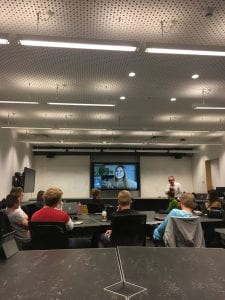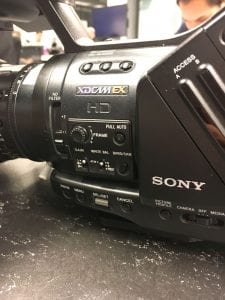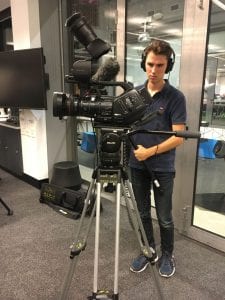To be completely honest, this assignment had greatly disadvantaged me in the progress of becoming a better observer and a better student for Translating Observation. This was due to the fact that I had missed out on Monday’s class which was crucial to the first part of this assignment. Luckily, I still had the opportunity to choose from one of the videos shot from exercise four.
As previously mentioned in one of my blog posts, what really caught my attention was Ellie’s group with the train anecdote:

I decided to utilise this video because if it was going to be part of my individual exercise, I wanted it to match my aesthetic and this was perfect in that aspect.
There are about five parts to my final video that I have submitted and they are comprised of my own shots, in sync with the audio from Ellie’s group. My intentions for Individual Exercise 2 were to match the story being told in the audio. Had I not explicitly said this, it would not have been obvious and would have left a huge room for interpretation. However, I do want to make sure that the audience understands what is happening in the video.
Here are the parts, explained by yours truly;
Part 1:

“The train slows to a stop as it pulls up the station”
I attempted to mirror the actions being described in the narration – as I enter into the frame, it comes in hand with “slows to a stop” as I walk in slowly to the shot.
Part 2:
As for the next shot, there are aesthetic/creative reasons for this and does not necessarily match the second passage being read:
“People get into a scramble and sprint up the ramp in order to make it to the train”

However, I did try my best to attempt to match it to the narrative. For example, when the word ‘scramble’ was mentioned, you could see me during 00:08 moving abruptly in order to do so.

I also put in an obvious emphasis into the words and took it literally – when she mentioned ‘people’, I inserted a shot with people around me, hence the literal aspect of this video.
Part 3:
I also wanted to roleplay the characters being introduced from the story. For example, she mentions that “…within the mob, there is a man…”, inserted with a shot of myself standing closer to the camera. At this point in the video, my face had not been explicitly displayed, which is why it was a perfect opportunity to display myself as the ‘man’. My interpretation of this certain character was almost menacing, which is why I decided to slightly make it a close-up, giving it an intimidating aura.

Part 4:
“…stranded and alone on the platform, watching the train leave…”
Yet again, I am putting emphasis to certain parts of the story because it was more accessible for me to imitate those certain words. In this shot, I almost have an unbothered look, similar to how the man may have looked when he missed the train. This is my answer to the question at the end of the video – “Or was he just looking for an excuse to miss the train all along?”. To me, it may not have bothered this man to have missed the train, hence why I looked in a certain direction, carelessly looking around. Through this speculation, that may have been how the man felt or looked when he missed the train.

Part 5:
In relation to part one, the last and final shot of me comes to a full circle as I stand up walk out of the shot.

It concludes and matches the questions being asked from the story. Not all of them necessarily have an answer ready and I find that the ambiguity makes it more alluring. Not everything has to be answered all the time – this could also be seen as a rhetorical question, as if we already know what the man’s motives were. This is exactly what I attempted to do with the ending of this video, exiting the shot.















